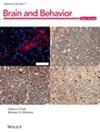Transcutaneous Vagus Nerve Stimulation Effects on Flavor-Evoked Electroencephalogram and Eye-Blink Rate
Abstract
Introduction
Chemosensory food signals are carried by the vagus nerve (VN) from the gut to the brain and these signals contribute to communicating fullness and caloric value of the consumed food in regulatory and reward-related contexts. Here, we aimed to explore whether neural responses to flavor can be modulated through noninvasive VN stimulation, which can be done transcutaneously (transcutaneous vagus nerve stimulation [tVNS]) on the outer ear via the auricular branch of VN. The ideal stimulation location on the outer ear for tVNS is not agreed on but two candidate locations are cymba conchae and tragus.
Methods
In this study, we explore the optimal stimulation location for tVNS (cymba conchae, tragus, and cymba conchae and tragus) and timing of tVNS relative to chocolate milk presentation (during, after) in a within-participants design (15 participants). We examined various measures of efficacy; event-related potential from electroencephalogram, eye-blink rate, perceptual and hedonic aspects of flavor, swallowing behavior, and consumption behavior.
Results
We observed no effect of stimulation location on any of the dependent variables. Unexpectedly, we observed a large effect of food consumption on spontaneous eye-blink rate.
Conclusion
In conclusion, overall we did not observe a clear optimal ear location for tVNS-induced modulation of neurophysiological, perceptual, and behavioral variables. Future studies may confirm whether spontaneous eye-blink rate can be a sensitive proxy for food reward-related phasic dopamine shifts.


 求助内容:
求助内容: 应助结果提醒方式:
应助结果提醒方式:


